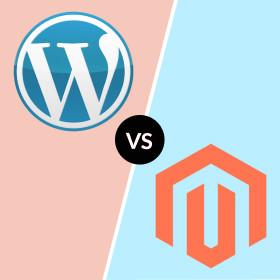
Today, Shopify is one of the dominant platforms in e-commerce solutions. Global brands like Red Bull, Sephora, and Staples already use Shopify for their online platforms. A Shopify web development company builds seamless navigation, adds secure checkout, and provides a great customer experience. This CMS tool is the 4th most popular ecommerce platform in the world, with a 10.32% market share. Its huge craze makes it a reliable and in-demand solution in the market. If you want to create a Shopify store for your small or big online business, you might be looking for how to do it. This guide will help you easily set up your own Shopify store!
How to Set up a Shopify Store in 10 Steps
Shopify is a user-friendly and easy-to-manage platform in the world. When creating a Shopify store on their own, many individuals and businesses often face issues related to how to make a Shopify store. They use the admin panel, connecting domains, etc. That’s why, to make your entire store-building process seamless, below we have mentioned the top 10 steps to start your Shopify store. Follow these steps one by one to successfully tell you how to build a store on Shopify:
1) Create an Account
Head to the official website of Shopify. And click on the Start Free Trial button in the top corner.
On the next slide, you will see a series of questions with pre-prepared answer options. However, you can also skip them completely or answer only those that match your business needs.
Enter your email address and create a password that is strong and unpredictable. Go ahead, and you need to choose a unique store name that aligns with your business objective. Once you do it, you will be redirected to the admin panel. And you have your four-day free trial to begin your Shopify setup.
2) Get Familiar With The Admin Panel
The following features will be at the forefront of your admin panel:
- Orders: You can manage order fulfilment, cancellations, and reviews.
- Products: This feature to add, edit, and manage your inventory of products.
- Customers: This feature provides a list of registered customers and their contact information and handles customer list exports.
- Content: Users can publish and manage their content.
- Finances: This feature lets you monitor your revenue, expenses, and profits.
- Analytics: This gives you updates about the real-time performance of your store. You can view sales numbers and product performance.
- Discounts: This feature lets you create discount codes with various rules.
- Apps: This store empowers you to install and manage apps. You can extend your Shopify store’s functionalities whenever you want to scale your shop.
3) Choose Your Theme
Once you are ready with your account, you have to set up a custom theme for Shopify web development. Shopify is known for its plenty of free and premium themes. You can change your default theme by going to the Online Store button. Select Themes from the dropdown menu. Then scroll down and choose one of the best free themes you like in your admin panel.
4) Add Navigation to Your Theme
- Go to the Online Store > Navigation section of your Shopify admin panel.
- You can click on the Footer menu link > Add menu items. This command is for customising your footer menu.
5) Add Products & Product-Related Content
You can add and organise your products easily in Shopify. Just follow these steps for how to start a business with Shopify:
Add new products:
- Head to Products
- Select Add product.
- Enter a title for your product and provide additional details.
- Click Save.
Edit a product:
- Go to Products
- Click your desired product you want to edit.
- Modify the product details.
- Click Save.
Include and exclude products:
- Go to Products
- Click the product’s name.
- Click Manage > Manage sales channels
- Click the sales channels and apps to include the product.
- Click Done and then Save.
Delete a product:
- Visit the Shopify admin, go to Products.
- Click the product you want to delete.
- On the product details page, click Delete product.
6) Set Up Payments & Checkout
Go to Settings in your Shopify admin. You will see the Payments option; click on it and choose a payment method like Shopify Payments, PayPal, or others. You need to enter your business and bank details and save your changes. Now, customers can pay easily when they buy products from your store.
7) Create Your e-Store’s Pages
You can easily create your e-store’s pages in Shopify. For that, simply go to the admin panel, click on “Online Store,” and then choose “Pages.” You need to click “Add Page” and give a title to it, like About Us, Contact, or FAQ, add your content, and click “Save.” You can repeat it for each page you need.
8) Set Up Shipping Rates
You can set up your shipping rates by going to Settings > Shipping and delivery, choose a shipping profile, and clicking Manage. Click Add Rate, enter the rate name and amount, and set any conditions (like weight or price). You can also adjust calculated rates or offer flat rates in local currencies. Click Done and Save. Make sure to review and update your shipping rates regularly.
9) Connect Your Domain
First, visit Settings and go to Domains in your admin panel. You need to select Buy new domain or Connect existing domain. You have to click Next, then choose Connect automatically. After that, click Close. By following these steps, you can take up to 48 hours for your domain to be verified. If the entire process is done, you will see it as Connected under the third-party domains section. Now users can access it through the custom web address that you use.
10) Launch
Once you have successfully followed all the steps, you need to make your Shopify store live. Go to Online Store > Preferences in your admin panel. Scroll to the Password protection section, uncheck the box that says Restrict access, and click Save. This removes the password that makes your store visible and open to everyone. After this step, your Shopify store is officially live and ready for customers to visit and shop.
Last Words
These were the steps to tell you how to build a Shopify website for your small and large businesses. Ecommerce web development services will give you access to countless features and functionalities to create an e-commerce store according to your unique preferences. Shopify is one of the easiest-to-use platforms that does not require you to learn coding languages. Setting up your Shopify web development store requires just a little technical knowledge on how to start a business with Shopify. However, the fact is that, for building a successful e-commerce platform through Shopify, it is always a great idea to connect with the best Shopify web development company. Their skilled developers already have the experience to build dynamic and high-performance Shopify platforms that you may not be able to achieve on your own.
Related Articles

WooCommerce vs Shopify: Which eCommerce Platform is Best For Your Business?

Magento vs Shopify: Which E-commerce Platform Is the Right for You?

10 Reasons to Choose Magento for E-Commerce Solutions

Reasons to Choose Shopify for Ecommerce Solutions

5 Best Ecommerce Platforms for SEO
Recent Blogs


Magento vs WordPress: Which is Best for Your Business?

How to Pick the Best SEO Company in Vancouver?

White Hat SEO Techniques: Everything You Need to Know
Categories
Newsletter
Archives
- December 2022
- April 2023
- August 2023
- December 2023
- July 2023
- June 2023
- May 2023
- November 2023
- September 2023
- April 2024
- August 2024
- December 2024
- February 2024
- January 2024
- July 2024
- June 2024
- March 2024
- May 2024
- October 2024
- September 2024
- April 2025
- August 2025
- February 2025
- January 2025
- July 2025
- June 2025
- March 2025
- May 2025
- November 2025


.webp)
